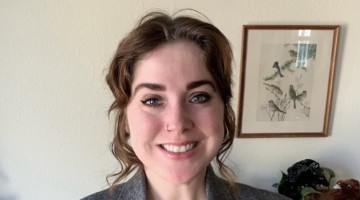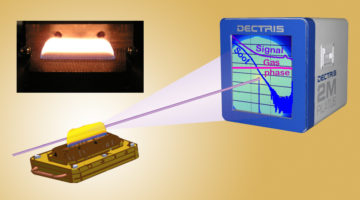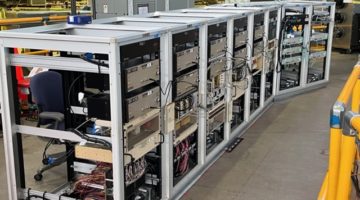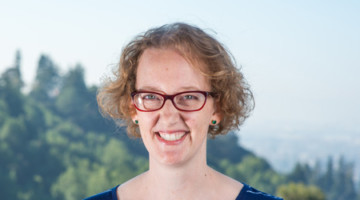Researchers at the ALS recently led the first direct measurement of the Donnan potential, an electric potential that arises from an imbalance of charges at the interface of a charged membrane and a liquid. The work could yield new insights in areas such as ion transport through cellular membranes, ion exchange membranes in energy storage strategies, and water purification technologies. Read more »
2022 Highly Cited Researchers
Clarivate recognizes the true pioneers in their fields over the last decade, demonstrated by the production of multiple highly-cited papers that rank in the top 1% by citations for field and year in the Web of Science™. Congratulations to Jinghua Guo, Zahid Hussain, Sung-Kwan Mo, and Wanli Yang! Read more »
Andrea Taylor, Senior Administrator
As a member of the business administration team, Andrea Taylor is involved in many processes across the ALS—work that draws on her previous roles in hospitality. She has also lent her musical talents to our User Meetings, so be sure to check out the music videos. Read more »
Distinguishing Nanoparticles from Gas-Phase Species in Reacting Flows
Researchers developed a strategy for distinguishing between gas-phase species and newly formed nanoparticles in mixed gas- and particle-phase reacting flows. The approach uses small-angle x-ray scattering to study particle formation as it occurs by explicitly accounting for temperature-dependent scattering from gases. Read more »![]()
UEC Nominations Due October 28
The Advanced Light Source Users’ Executive Committee (UEC) invites nominations for its upcoming election for five new UEC members (2023–2025 term). Nominations will be accepted through Friday, October 28, 2022. Membership in the ALS UEC shall be open to those users, including students, who are interested in research at the ALS. Read more »
Summer 2022 Shutdown Recap
The ALS returned to user operations on August 23 after its summer shutdown. The work included larger projects, such as installation of magnet stands for the ALS-U accumulator ring and the replacement of the liquid nitrogen tank, as well as several other facility improvements. Read more »
Tracy Mattox, User Services Group Leader
The new user services group leader is coming to the ALS from our neighboring user facility, the Molecular Foundry, where she has been supporting and collaborating with users for 15 years. Outside of the lab, she is a track and field coach, yoga instructor, and children’s book author. Read more »
A New Material System for Mixed-Plastic Recycling
Scientists have designed a new material system to overcome one of the biggest challenges in recycling consumer products: mixed-plastic recycling. Their achievement will help enable a much broader range of fully recyclable plastic products and brings into reach an efficient circular economy for durable goods like automobiles. Read more »
Valeriy Yashchuk Receives 2022 Klaus Halbach Award
Valeriy Yashchuk aims to make the binary pseudo-random calibration tool (BPR) the internationally recognized standard for thorough characterization of a broad spectrum of topography measuring tools. Others might find it daunting to convince scientists around the world to agree on one standard, but Yashchuk is accustomed to roadblocks, and finding creative solutions to them. The ALS Users’ Executive Committee recognized Yashchuk, program lead for metrology, for developing this critical technology. Read more »
Steve Kevan Says, “See You Soon!”
After announcing his impending retirement earlier this year, ALS Director Steve Kevan has worked to ensure a smooth transition to the interim ALS management team. He shares his vision of the collaborative future of the ALS and his goal to return as a user before saying not a farewell, but a “see you soon!” Read more »
- « Previous Page
- 1
- …
- 10
- 11
- 12
- 13
- 14
- …
- 28
- Next Page »









